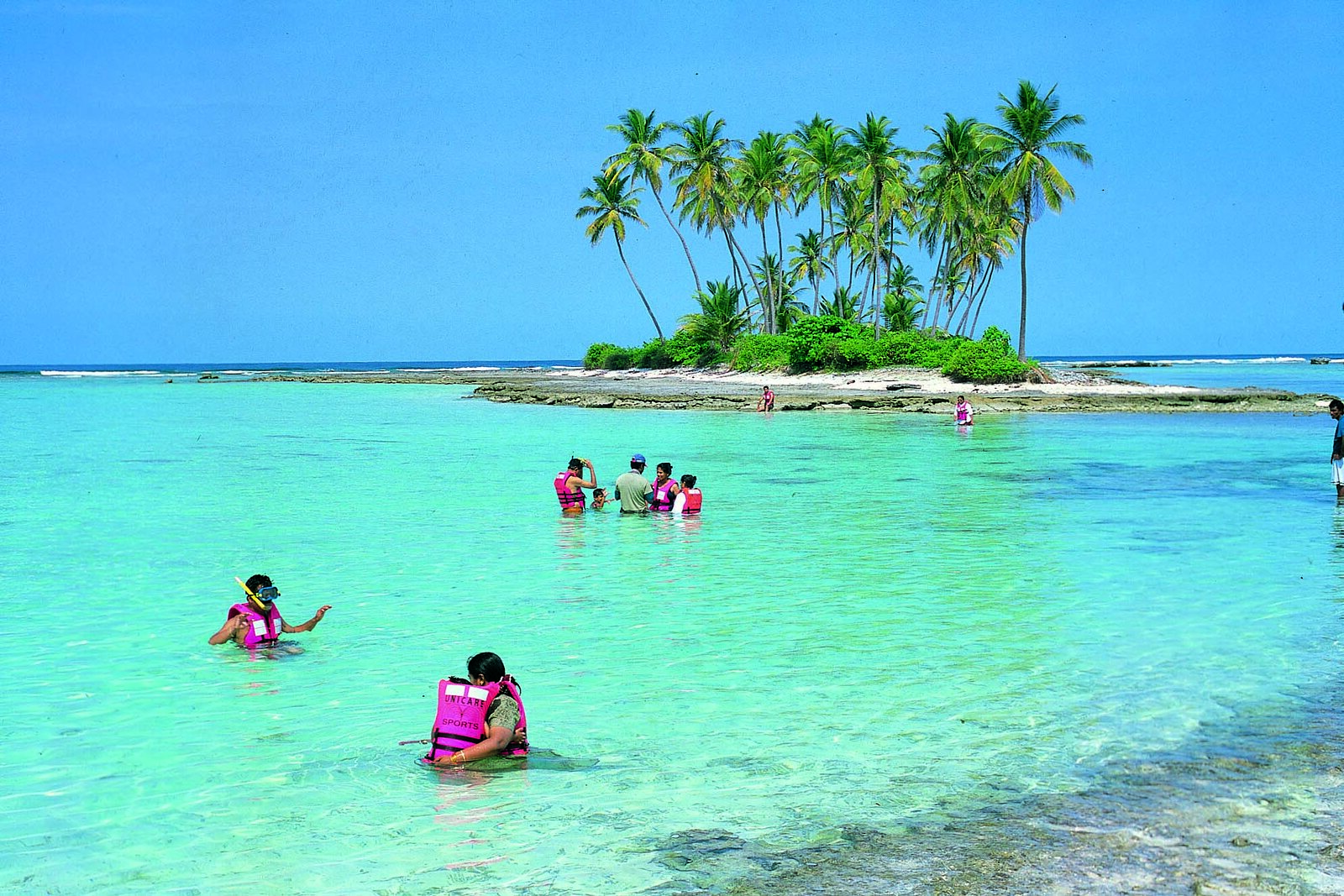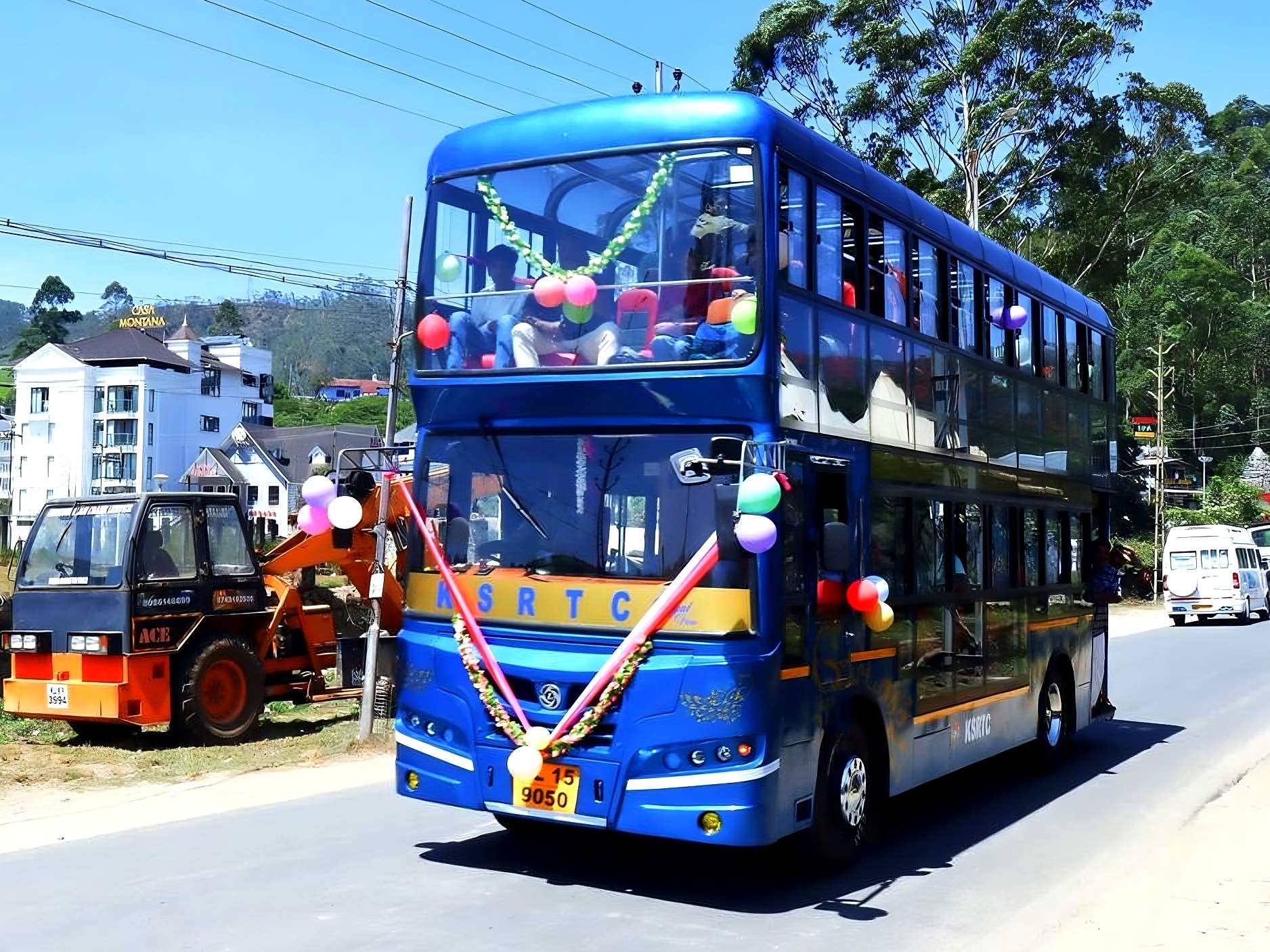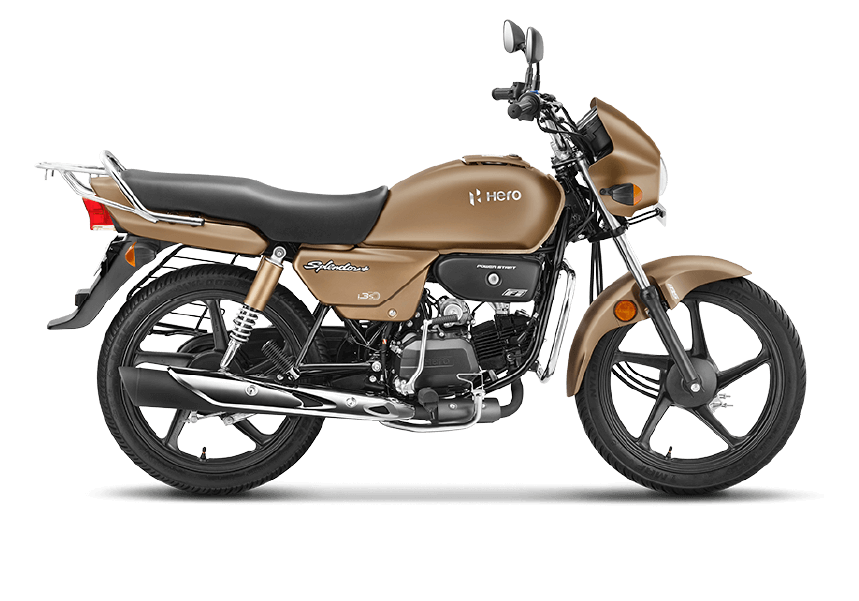1. Lakshadweep’s Name History:
Lakshadweep’s name has evolved through time, reflecting its unique geography and cultural influences:
- Early References: Mentioned in ancient Tamil texts as “Lakshadvipa” meaning “ten thousand islands.”
- Medieval Period: Known as “Laccadive” by European explorers.
- Post-Independence: Officially named “Lakshadweep” in 1956, signifying “a hundred thousand islands” in Malayalam.
2. Lakshadweep’s Famous Things:
Lakshadweep’s charm lies beyond its idyllic beaches, captivating tourists with its unique features:
- Coral Reefs: Vibrant underwater ecosystems teeming with colorful fish, turtles, and marine life.
- Lagoons and Beaches: Pristine turquoise waters, soft white sand, and secluded shores offer paradise-like settings.
- Lighthouses: Historic towers guiding ships and adding a touch of maritime charm.
- Water Sports: Scuba diving, snorkeling, kayaking, and windsurfing provide thrilling adventures.
- Ayurveda and Wellness: Traditional Indian treatments for relaxation and rejuvenation.
- Ludi (Boat Races): Exciting traditional boat races during festivals showcasing local skills and culture.
3. Geographical Landscape and Nearby States:
Lakshadweep is an archipelago of 36 islands nestled in the Laccadive Sea, off the coast of Kerala:
- Location: Southwestern India, approximately 400 km west of Kerala’s coast.
- Island Types: Atolls formed by coral reefs surrounding a central lagoon.
- Nearby States: Kerala is the closest mainland state, while Karnataka and Tamil Nadu are further north.
4. Lakshadweep Festivals and Celebration Methods:
Lakshadweep’s festivals are vibrant celebrations of culture and faith:
- Eid ul-Fitr: Marks the end of Ramadan with joyous prayers, feasts, and community gatherings.
- Milad-un-Nabi: Celebrates the Prophet Muhammad’s birthday with processions, recitals, and devotional songs.
- Ugadi (Kerala New Year): Observed with traditional rituals, music, and delicious feasts.
- Ludi (Boat Races): Exciting competitions between decorated boats during festivals, showcasing local skills and community spirit.
5. Lakshadweep Dance and Music:
Lakshadweep’s music and dance reflect its Maldivian and Islamic influences:
- Bodu Beru: Energetic drum dance performed by men, often accompanied by singing and chanting.
- Kolattam: Stick dance performed by women, showcasing rhythmic movements and colorful costumes.
- Oppana: Traditional wedding dance performed by women, characterized by graceful movements and melodic singing.
- Maanbaa: Romantic songs sung by women, often accompanied by clapping and rhythmic swaying.
6. Famous Old Literatures Associated with Lakshadweep Culture:
Lakshadweep’s cultural heritage is reflected in its rich literary tradition:
- Thani: Ancient Maldivian poems and songs narrating historical events, folklore, and love stories.
- Raas:a: Prose narratives recounting myths, legends, and social customs.
- Faazu: Short lyrical poems expressing emotions and philosophical thoughts.
- Arabic and Islamic Texts: Influence the religious and cultural practices of the islands.
7. Lakshadweep Temples:
While Islam is the predominant religion, there are a few Hindu temples in Lakshadweep:
- Amini Devi Temple on Amini Island: Dedicated to Goddess Durga, known for its unique architectural style.
- Malik Abdullah Mosque on Kavaratti Island: An ancient mosque with intricate carvings and historical significance.
8. Lakshadweep Beaches:
Lakshadweep boasts pristine beaches with soft white sand and turquoise waters:
- Agatti Beach: Known for its crystal-clear waters and vibrant coral reefs.
- Kadmat Beach: Offers stunning views and a laid-back atmosphere.
- Bangaram Beach: A secluded paradise with untouched beauty and abundant marine life.
Diving into the Turquoise Depths of Lakshadweep:
11. Lakshadweep National Parks:
Lakshadweep, a pristine archipelago of coral islands, boasts two national parks teeming with marine life:
- Minicoy National Park: India’s smallest national park, encompassing Minicoy Island and its surrounding coral reefs, lagoons, and mangroves. Home to diverse marine fauna like sea turtles, dolphins, and colorful fish.
- Agatti-Dhanushkodi National Park: Comprises Agatti and Dhanushkodi Islands, protecting coral reefs, seagrass meadows, and nesting grounds for migratory birds like turtles and terns.
12. Lakshadweep Cuisine and Street Food:
Lakshadweep’s cuisine is a delightful blend of seafood, coconut, and spices, reflecting its island life:
- Seafood Delicacies: Mashed tuna curry, lobster preparations, grilled fish, and coconut-based fish curries are must-try dishes.
- Coconut Delights: Fresh coconut milk in curries, chutneys, and desserts adds a unique flavor.
- Street Food: Samosas, pakoras, and banana fritters offer quick bites.
- Vegetarian Options: Limited but available, with dishes like lentil curries, rice preparations, and coconut-based vegetables.
- Unique Flavors: Local spices like black pepper, cloves, and cardamom add distinct aromas and flavors.
13. Renowned Medical Hospitals (5):
Healthcare facilities in Lakshadweep are primarily focused on primary care, with limited specialized healthcare options:
- Agatti Island Hospital: Main healthcare facility offering basic medical services and emergency care.
- Minicoy Island Hospital: Provides primary healthcare services and referrals for complex cases.
- Kadmat and Kavaratti Island Dispensaries: Offer basic medical services to local communities.
- Indian Naval Hospital, Kavaratti: Military hospital providing healthcare to navy personnel and civilians in emergencies.
- Telemedicine Initiative: Connects patients with mainland specialists for consultations and diagnostics.
14. Cinema Industry and Top 10 Theatres:
Lakshadweep lacks a film industry and dedicated cinema halls due to its small population and limited infrastructure. However, some options exist:
- Open-air screenings: Local authorities and resorts occasionally organize movie screenings outdoors for entertainment.
- Limited satellite TV: Some channels may offer access to Bollywood and Indian regional films.
- Travel to mainland India: For a wider cinema experience, residents and tourists can visit mainland cities with diverse theaters.
15. Industrial Places and Jobs:
Lakshadweep’s economy primarily relies on tourism, fishing, and coconut farming. Industrial activity is limited:
- Island Development Authority (IDA) projects: Construction and maintenance of infrastructure like harbors, airports, and tourist facilities provide some employment.
- Fishing industry: Fish processing and export offer limited job opportunities.
- Coir industry: Coconut fiber processing for rope and weaving offers traditional employment.
- Government jobs: Administrative roles in various departments offer stable employment.
- Tourism sector: Hotels, resorts, water sports activities, and souvenir shops cater to tourists, creating seasonal jobs.
16. Agricultural Practices:
Agriculture in Lakshadweep faces challenges due to limited land and freshwater resources:
- Focus on coconut: Coconuts are the main agricultural crop, used for food, oil, and handicrafts.
- Limited vegetables and fruits: Small-scale cultivation of vegetables and fruits like brinjal, papaya, and bananas for local consumption.
- Saline agriculture: Experimental efforts with salt-tolerant plants like spinach and purslane hold potential.
- Sustainable practices: Organic farming and water conservation techniques are crucial for environmental protection.
Remember, Lakshadweep’s charm lies not only in its pristine beaches and turquoise waters but also in its unique culture, resilient communities, and efforts towards sustainable development. Feel free to ask further questions about Lakshadweep or any other topic that piques your interest!
Diving into the Turquoise Depths of Lakshadweep:
11. Lakshadweep National Parks:
Lakshadweep, a pristine archipelago of coral islands, boasts two national parks teeming with marine life:
- Minicoy National Park: India’s smallest national park, encompassing Minicoy Island and its surrounding coral reefs, lagoons, and mangroves. Home to diverse marine fauna like sea turtles, dolphins, and colorful fish.
- Agatti-Dhanushkodi National Park: Comprises Agatti and Dhanushkodi Islands, protecting coral reefs, seagrass meadows, and nesting grounds for migratory birds like turtles and terns.
12. Lakshadweep Cuisine and Street Food:
Lakshadweep’s cuisine is a delightful blend of seafood, coconut, and spices, reflecting its island life:
- Seafood Delicacies: Mashed tuna curry, lobster preparations, grilled fish, and coconut-based fish curries are must-try dishes.
- Coconut Delights: Fresh coconut milk in curries, chutneys, and desserts adds a unique flavor.
- Street Food: Samosas, pakoras, and banana fritters offer quick bites.
- Vegetarian Options: Limited but available, with dishes like lentil curries, rice preparations, and coconut-based vegetables.
- Unique Flavors: Local spices like black pepper, cloves, and cardamom add distinct aromas and flavors.
13. Renowned Medical Hospitals (5):
Healthcare facilities in Lakshadweep are primarily focused on primary care, with limited specialized healthcare options:
- Agatti Island Hospital: Main healthcare facility offering basic medical services and emergency care.
- Minicoy Island Hospital: Provides primary healthcare services and referrals for complex cases.
- Kadmat and Kavaratti Island Dispensaries: Offer basic medical services to local communities.
- Indian Naval Hospital, Kavaratti: Military hospital providing healthcare to navy personnel and civilians in emergencies.
- Telemedicine Initiative: Connects patients with mainland specialists for consultations and diagnostics.
14. Cinema Industry and Top 10 Theatres:
Lakshadweep lacks a film industry and dedicated cinema halls due to its small population and limited infrastructure. However, some options exist:
- Open-air screenings: Local authorities and resorts occasionally organize movie screenings outdoors for entertainment.
- Limited satellite TV: Some channels may offer access to Bollywood and Indian regional films.
- Travel to mainland India: For a wider cinema experience, residents and tourists can visit mainland cities with diverse theaters.
15. Industrial Places and Jobs:
Lakshadweep’s economy primarily relies on tourism, fishing, and coconut farming. Industrial activity is limited:
- Island Development Authority (IDA) projects: Construction and maintenance of infrastructure like harbors, airports, and tourist facilities provide some employment.
- Fishing industry: Fish processing and export offer limited job opportunities.
- Coir industry: Coconut fiber processing for rope and weaving offers traditional employment.
- Government jobs: Administrative roles in various departments offer stable employment.
- Tourism sector: Hotels, resorts, water sports activities, and souvenir shops cater to tourists, creating seasonal jobs.
16. Agricultural Practices:
Agriculture in Lakshadweep faces challenges due to limited land and freshwater resources:
- Focus on coconut: Coconuts are the main agricultural crop, used for food, oil, and handicrafts.
- Limited vegetables and fruits: Small-scale cultivation of vegetables and fruits like brinjal, papaya, and bananas for local consumption.
- Saline agriculture: Experimental efforts with salt-tolerant plants like spinach and purslane hold potential.
- Sustainable practices: Organic farming and water conservation techniques are crucial for environmental protection.
Remember, Lakshadweep’s charm lies not only in its pristine beaches and turquoise waters but also in its unique culture, resilient communities, and efforts towards sustainable development. Feel free to ask further questions about Lakshadweep or any other topic that piques your interest!


